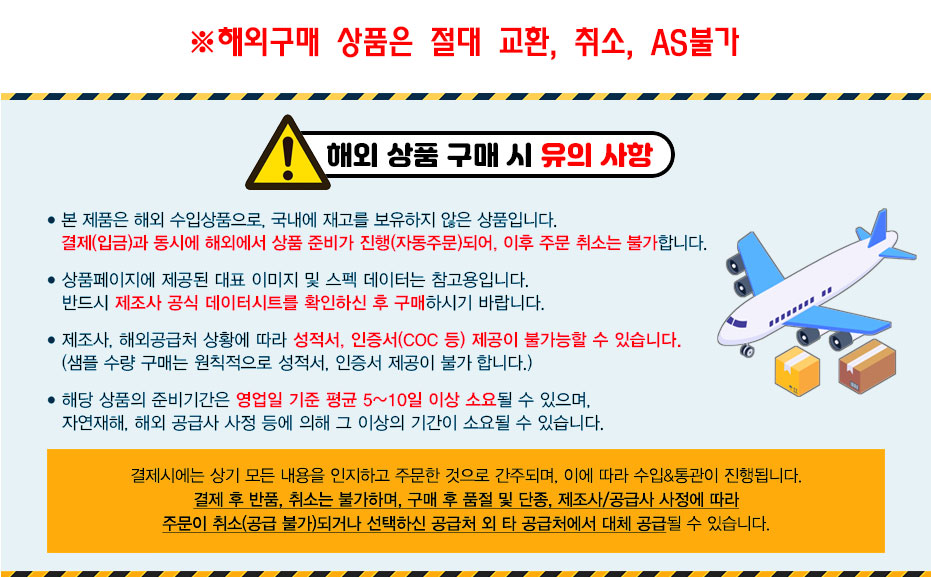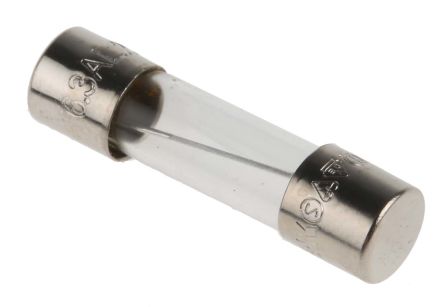
■ 제품필수정보
| 제조사 |
Eaton |
| 제조사품명 |
S506-6.3-R |
| 간략설명 |
Eaton 6.3A T Glass Cartridge Fuse, 5 x 20mm |
■ 제품사양
Current 등급 = 6.3A Fuse Size = 5 x 20mm Fuse Speed = T Voltage Rating = 250V ac Body Material = Glass
시리즈 = S506 Eaton Bussmann Anti Surge (T) LBC Cartridge Fuses - Glass Bodied 5x20 mm. This range of glass cartridge fuses from Eaton Bussmann is ideal for providing protection to devices or internal circuits from short circuits and overcurrent. They are deliberately weaker components which, when too much current is drawn, will blow. Once the fuse has blown it will need replacing in order to make the circuit complete and allow the flow of current. Why choose a glass cartridge fuse? Glass and ceramic fuses have similar properties. However, you may choose a glass cartridge fuse as it enables you to see the inside of the fuse. Therefore it is easier to determine whether the fuse has blown. What size is it? 5 mm x 20 mm is a standard cartridge size and it measures approximately 20 mm long by 5 mm in diameter. They are popular in board and panel protection and will fit a compatible 5 x 20 mm fuse holder. What voltage is it? These cartridge fuses are available with 40mA to 15 Amp current ratings for applications where the system voltage rating is 250 Volts AC. What Speed is it? This particular cartridge fuse is T speed rated which means it is a slow-acting fuse, sometimes referred to as anti-surge. It is able to tolerate higher levels for a short period, without shorting. Therefore, if a sudden change occurs, this fuse will not blow immediately. They are suitable for applications where a sudden flow of high current is required. What is Breaking Capacity? Breaking capacity is the level of current that the fuse can safely handle without exploding or rupturing. The breaking capacity of your fuse should be greater than the fault current of your electronic circuit. This particular cartridge fuse is LBC (Low Breaking Capacity). What are cartridge fuses used for? For the protection of components and equipment from costly damage used by over-current To isolate sub-systems from the main system once a fault has appeared





